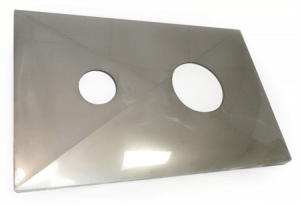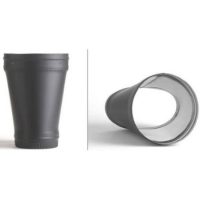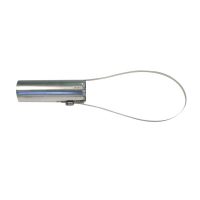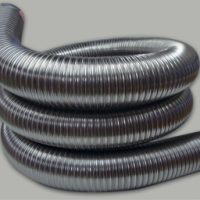Chimney Chase Cover
Modern construction techniques have adapted to new methods of heating homes. In many cases, gone are the traditional brick or stone chimneys that were lined with terracotta liners. Today, new construction incorporates a venting system for the heating unit into a Class A Chimney housed inside a chase. This structure is usually made of either wood, metal, stucco, or brick/stone veneer. While its purpose is similar to a chimney, a chimney chase has its own unique maintenance needs. On the top of the chase, a chimney chase cover is installed.
In simple terms, a chimney chase is a box attached to your home. It’s built large enough to be aesthetically pleasing on the outside of your building. It also is designed to contain your fireplace, furnace, or stove venting system. In some cases, multiple flues are accommodated.
What is the purpose of a Chimney Chase Cover?
Imagine what would happen if you had a large, unprotected hole in your roof. In short order, water, debris, even animals would begin accumulating in the attic of your house. Also in short order, you’d have a major problem with water leaking in and structural damage beginning to occur.
Your chimney chase, if left uncovered or with a damaged cover, can become just as much of a problem. Water leaking in will soak all the building material including the sidewall of your home. In time, mold and dry rot will begin to occur. This damage often goes undetected until you have a major problem that requires extensive (and expensive!) repairs. This can all be avoided for life with a stainless steel chase cover.
In addition to water, debris, nesting birds and small animals can also invade a chase with a bad cap or no cap. Just as your roof needs to be water-tight to keep your home dry, your chimney chase cover also needs to be solid and leak-free. The best chimney chase cover is a stainless steel, custom made cap. It is installed with adhesive applied to the top edge of your chase, then secured with heavy screws. It will have openings through which your liner(s) can pass. You can even have a chimney chase cover custom-made so it looks like a traditional chimney cap. A custom fabricator can make such a cap out of stainless steel or even copper.
The important thing to remember is that your chase is part of the structure of your house. It should be closed in and capped properly to protect your home from costly damage.






